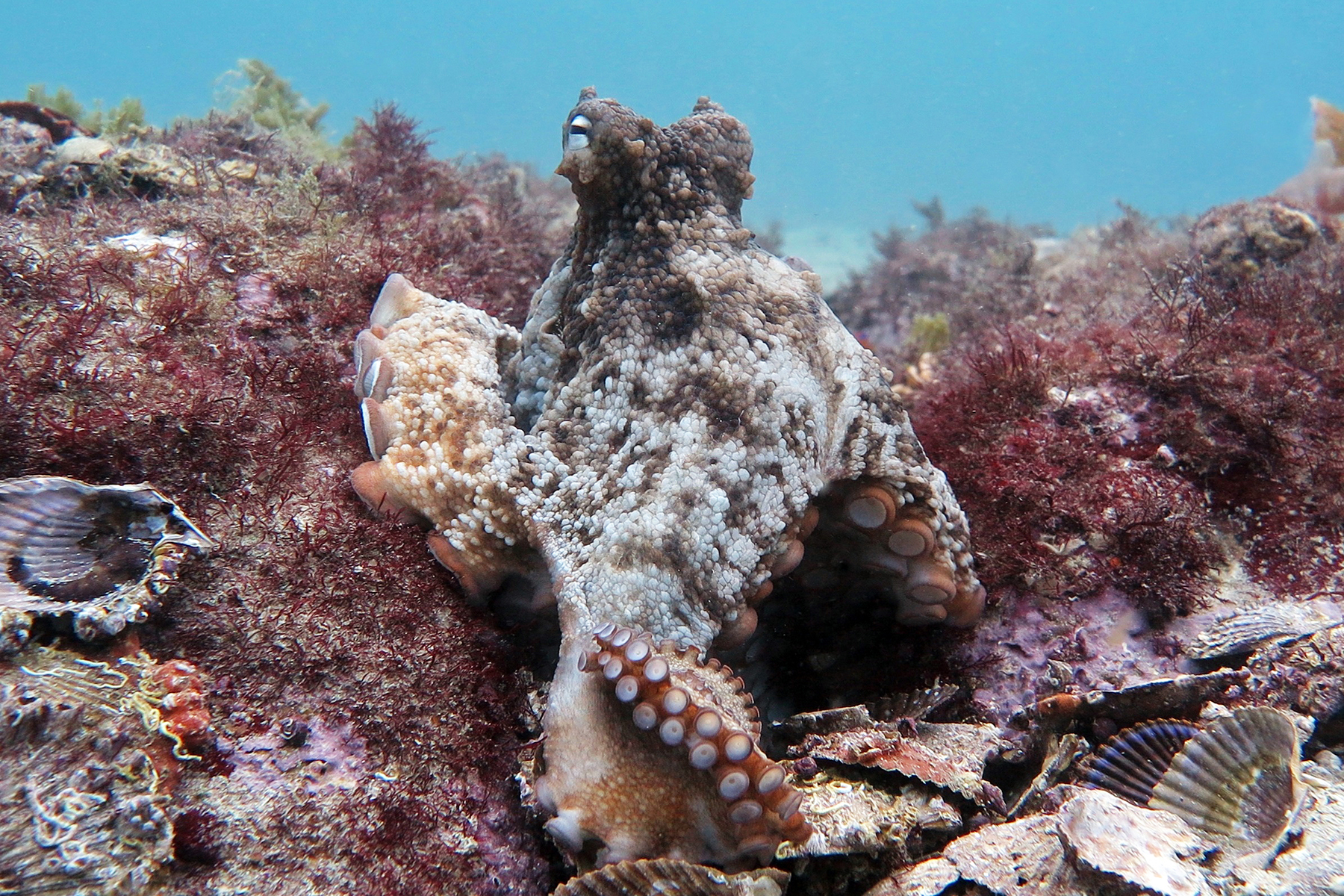

You wouldn’t think that the so-called gloomy octopus would be the stand-out socializer in its genus. Octopuses are notoriously bad at getting along with each other, and in almost all cases seem to live out their lives in isolation. They might fight for resources, and males are driven to risk a female’s wrath in order to briefly mate. But other than that, they pretty much fly solo. Even devoted octo-moms, who basically spend their whole adult lives brooding their eggs, wander off to wither away and die instead of interacting with their hatchlings. As far as we know, anyway. These creatures are difficult to study, so scientists are only just starting to uncover their secrets.
“They’re really difficult to keep in the lab,” says Stephanie Chancellor, a Ph.D. student in biological sciences at the University of Illinois at Chicago. And not just because they have extremely touchy requirements for the temperature and alkalinity of their habitats. “They’re escape artists.”
Even scientists who’ve trained to dive into the depths and observe octopuses in the field—which Chancellor did as a student at Alaska Pacific University—are learning very slowly.
“The equipment is expensive,” Chancellor explains, though it’s gotten much better in recent years. “And there’s only so much time you can spend underwater. They’re also very cryptic. It takes a very specific skill set to find an octopus. You either look for their middens, which are basically octopus trash piles, or you get very lucky by scaring them as you swim by.”
So when scientists first found a group of Octopus tetricus (otherwise known as the gloomy octopus) living together in Australia’s Jervis Bay in 2009, they didn’t assume the homestead they dubbed “Octopolis” was the result of some weird one-off behavior.
“Until recently, all evidence of social behavior in octopuses was either anecdotal, or happened in a lab setting,” Chancellor says. “But we’re starting to think they might be more social than previously thought. More manpower seems to be revealing that is the case.”
And it turns out the phenomenon isn’t even uncommon in Jervis Bay. In a paper published this week in Marine and Freshwater Behaviour and Physiology, Chancellor and her colleagues report the discovery of a second (and perhaps even more impressive) octopus hangout: Octlantis.
It’s a magical place, full of dens built from the chewed-up remains of clams and scallops and featuring a collection of fishing lures and beer bottles. Within its three separate beds, octopus live in harmony. For octopuses, anyway. They actually fight pretty much constantly, but they’re still sharing space. For the most part.
“From the data we have, it seems like there are a lot of den evictions,” Chancellor says. “It’s definitely really aggressive.”
Some might say that isn’t very sociable, but the researchers say that even unfriendly interactions within a group still count as social behavior the likes of which octopods weren’t supposed to exhibit. Somewhere between 10 and 15 creatures signaled each other, mated, and defended mates and territory while sharing one neighborhood. These are individuals brought together under duress, Chancellor explains, forced to share—and squabble for—resources, but apparently not always driving each other away.
For now, the researchers don’t have much data on the group. They actually only spotted the community on the first of two days of fieldwork, and had to act quickly to drop cameras down and collect any footage at all. Chancellor is still reviewing video for more information on their behavior, and hopes further studies can tell them more. It’s possible that there are other species who will make the same sort of opportunistic colony, given the right circumstances.
“I’m sure we miss a lot when we go looking for octopuses, sadly,” she says. “They’re just so well hidden.”
